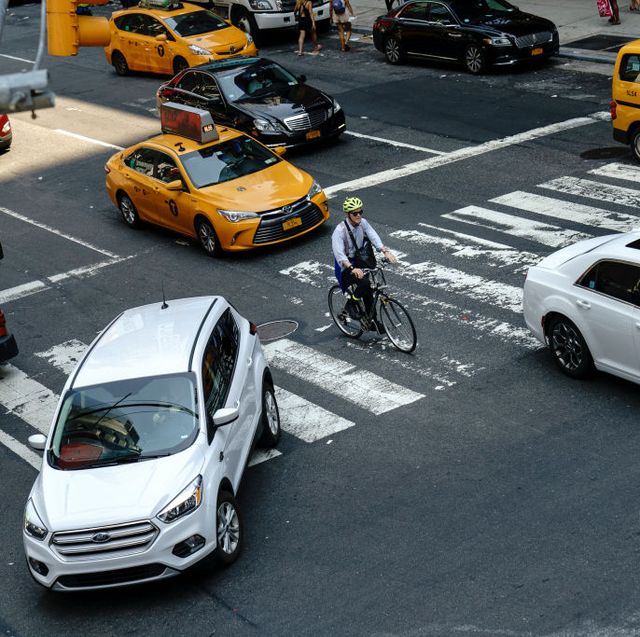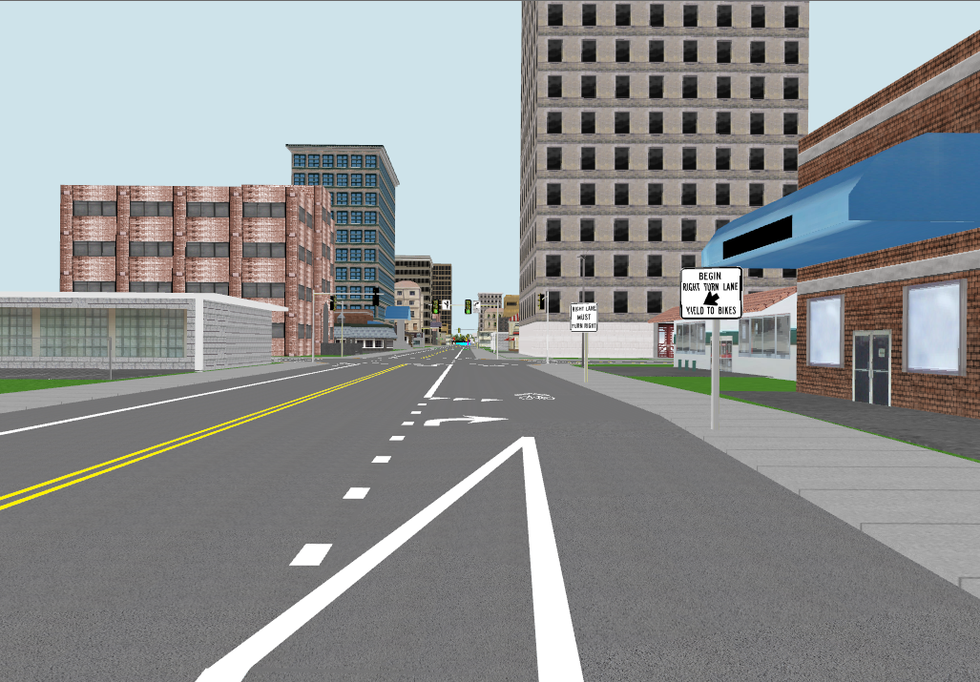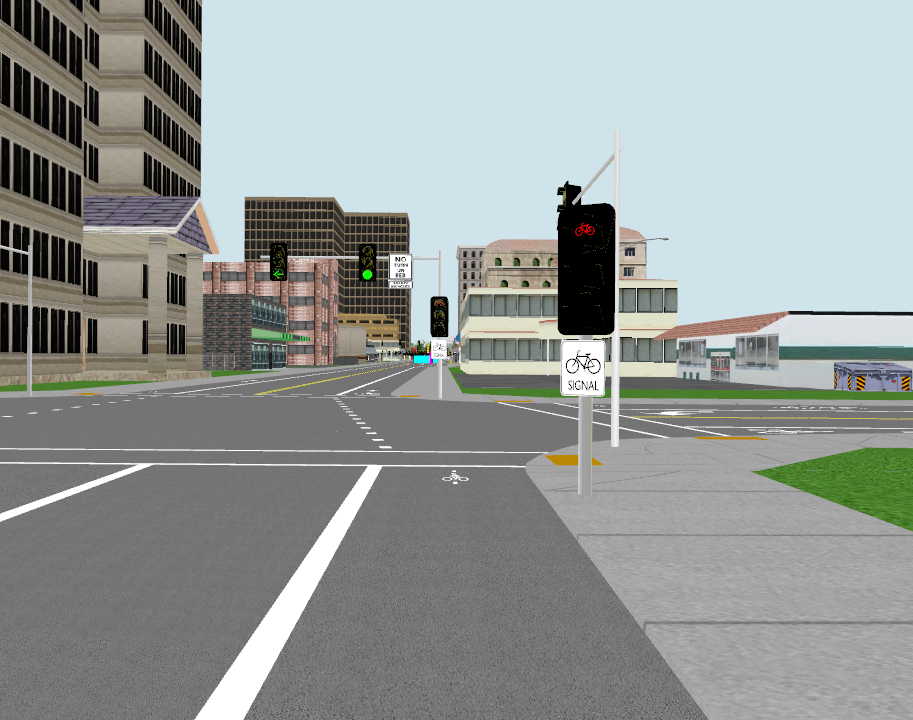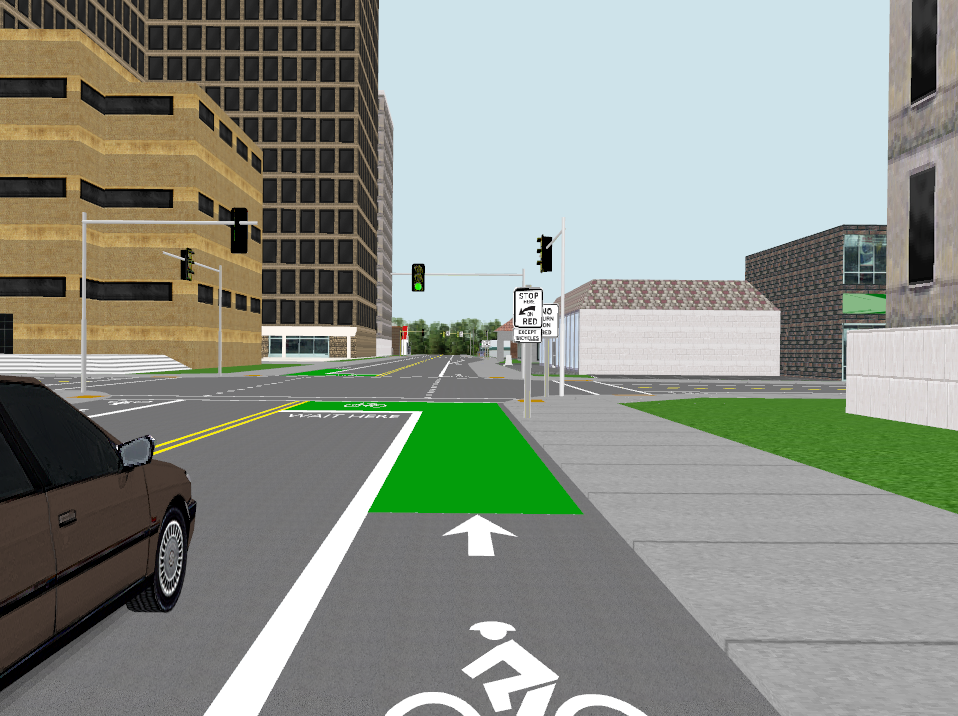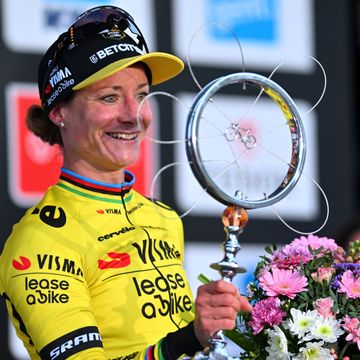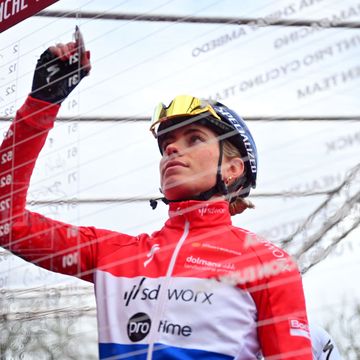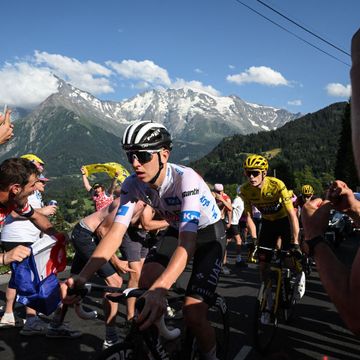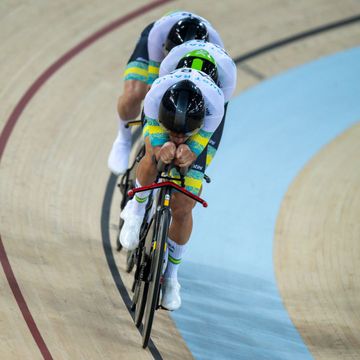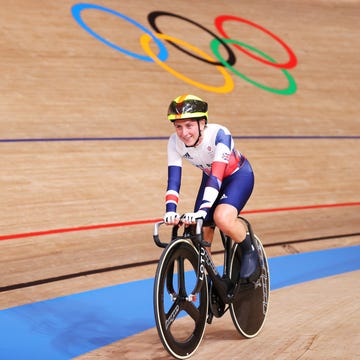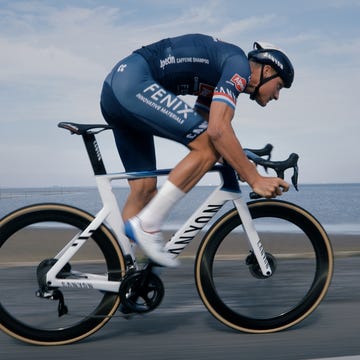If you had to guess where close to half of all bicycle-vehicle collisions happened, what would you say? According to the National Highway Traffic Safety Administration, it’s intersections. Specifically, signalized intersections in urban areas.
This stat made recent research from the Oregon State University College of Engineering, published in Accident Analysis & Prevention, about three different intersection treatments particularly interesting. “Our study was motivated by the fact that cyclists are overrepresented in certain crash outcomes at signalized intersections in Oregon,” Logan Scott-Deeter, one of the study’s authors, tells Bicycling. “Because of this, the Oregon Department of Transportation is investing in the evaluation and adoption of treatments to promote bicyclist safety at signalized intersections.”
According to the researchers,“Bicyclist safety at urban intersections is a critical element for encouraging an increase in bicycle commuting,” and while progress has been made in developing roadway designs that increase bicyclists’ safety, not much data has been collected comparing and contrasting the effects different treatment types have on riders and rider behavior.
Researchers examined three different types of intersection treatments for the study: a “mixing zone,” a bicycle signal, and a “bike box.”
Mixing zone
A mixing zone occurs when a bike lane simply disappears shortly before an intersection and turns into a shared lane from which a vehicle can turn right, usually marked by “sharrow” on the asphalt. In this treatment, different modes of traffic go from being guided to use separate parts of the roadway to jockeying for position and figuring it out for themselves.
Bicycle signal
A bicycle signal is exactly what it sounds like, a traffic signal specifically for bikes and separate from the signal for vehicles.
Bike box
A bike box treatment is a painted box at an intersection that guides cyclists to the front of the line, so to speak, positioning them and allowing them to start slightly ahead of vehicles when the light changes and traffic starts moving.
The study consisted of 40 cyclists riding OSU’s Bicycling Simulator through 24 scenarios while their eye movements were tracked, their stress response measured, and the line they rode observed. The researchers also administered a survey which, combined with the physical data, yielded interesting information about the effects of the intersection treatments on rider behavior.
Not surprisingly, the “mixing zone” treatment was the most stressful for riders and also “correlated to the most unpredictable riding behavior,” according to David Hurwitz, a transportation engineering professor at Oregon State University and one of the leaders of the study. “This was expected,” the researchers wrote, “as the participants were not provided any information about how to ride, and the lack of bike lane forced them to maneuver into a shared lane. These unpredictable movements can lead to higher potential crash risk, as past research found that uncertainty regarding the presence of the other party elicits more dangerous situations.” In other words, clarity creates safety, and the mixing zone creates the most confusion of the three treatments that were studied.
The bicycle signal was the treatment most preferred by riders, but this is where things get surprising: it was not rated as the safest option by researchers specifically because of how comfortable the riders felt and the effect that had on their attention. When looking at the eye movement data, researchers observed that riders were less visually aware of the vehicles around them, therefore making them more vulnerable to right/left hook crashes and distracted drivers.
A bike box, on the other hand, seems to be the ideal middle ground and the option of the three that these researchers recommend. Cyclists feel more comfortable when compared to the free-for-all of a mixing zone because they have a designated area to be and they’re out ahead of vehicles, but according to the eye movement analysis, they remain alert and watchful for vehicles. “We always want to be cautious about introducing engineering treatments that might produce a false sense of security for a particular road user,” Hurwitz tells Bicycling. With the bike box treatment, the study participants traveled a predictable path in the roadway while also being more visible and obvious to drivers.
Natascha Grief is Bicycling’s Health & Fitness Editor. She got her first bike shop job before she was old enough to drink. After a six-year stint as a bike mechanic and earning a couple pro-mechanic certifications and her USA Cycling Race Mechanics license, she became obsessed with framebuilding and landed an apprenticeship with framebuilder Brent Steelman in her hometown of Redwood City, California. After that, she spent several years working for both large and not-so-large cycling brands before switching gears to become a NASM certified personal trainer. She’s honed her skills as a trainer and coach for over a decade, while also teaching Spin. During the dumpster fire that was the year 2020, she opened a fitness studio and began contributing regularly to Runner’s World and Bicycling as a freelance writer. She joined the editorial staff of Bicycling in 2022.
